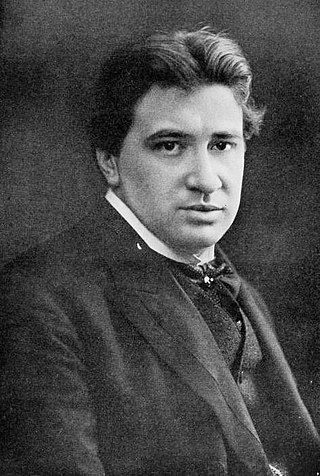
The Conservatorio di Musica Benedetto Marcello di Venezia, also known as the Venice Conservatory, is a conservatory in Venice, Italy named after composer Benedetto Marcello and established in 1876.

The Conservatorio di Musica Benedetto Marcello di Venezia, also known as the Venice Conservatory, is a conservatory in Venice, Italy named after composer Benedetto Marcello and established in 1876.
The conservatory was established in 1876 as Liceo e Società Musicale Benedetto Marcello, became communal in 1895 under the name Liceo Civico Musicale "Benedetto Marcello", and attained conservatory status in 1915 as Liceo Civico Musicale Pareggiato Benedetto Marcello. In 1940, under the directorship of Gian Francesco Malipiero, it became Conservatorio di Stato "Benedetto Marcello". The conservatory is housed in Palazzo Pisani a Santo Stefano - built between 1614 and 1615 -, located facing Campo Santo Stefano in the sestiere of San Marco. The building is owned by the municipality of Venice. [1]
The conservatory offers courses in singing, solfège, music dictation, score reading, music composition, jazz music, electronic music, choral music, orchestration, and in playing guitar, harp, piano, violin, flute, lute, double bass, saxophone, trumpet, cello, percussion instruments, oboe, bassoon, clarinet and organ. [2]
The conservatory accepts foreign students, provided that they pass an entry test and have sufficient knowledge of the Italian language. [3]

Ermanno Wolf-Ferrari was an Italian composer and teacher. He is best known for his comic operas such as Il segreto di Susanna (1909). A number of his works were based on plays by Carlo Goldoni, including Le donne curiose (1903), I quatro rusteghi (1906) and Il campiello (1936).

Giuseppe Sinopoli was an Italian conductor and composer.

Gian Francesco Malipiero was an Italian composer, musicologist, music teacher and editor.

Bruno Maderna was an Italian composer, conductor and academic teacher.

The Milan Conservatory, also known as the Conservatorio di Milano and the Conservatorio Giuseppe Verdi, is a college of music in Milan, Italy.
The city of Venice in Italy has played an important role in the development of the music of Italy. The Venetian state—i.e. the medieval Maritime Republic of Venice—was often popularly called the "Republic of Music", and an anonymous Frenchman of the 17th century is said to have remarked that "In every home, someone is playing a musical instrument or singing. There is music everywhere."
This is a list of music conservatories in Naples, Italy.
The New Venice School is a movement in contemporary music in Venice from the 1970s to the present, made up of composers directly influenced from teachings at the Venice Conservatory of the distinguished composer and pedagogue Baron Ernesto Rubin de Cervin (Albrizzi), who studied under Luigi Dallapiccola in Florence and Goffredo Petrassi in Rome. His many students include the composer and conductor Giuseppe Sinopoli (1946–2001); the composer and teacher Marino Baratello ; the composer Claudio Ambrosini ; and the Amsterdam-based, English composer Geoffrey King. Although not directly influenced by the legacy of Rubin de Cervin and the above-listed lineage, other Venetian composers were influential in the development of new music in Venice, namely Bruno Maderna (1920–1973) and Luigi Nono(1924–1990).
Ernesto Rubin de Cervin Albrizzi was an Italian composer and teacher.
Gabriele Bianchi was an Italian composer, conductor and teacher.
Nino Sanzogno was an Italian conductor and composer.

Ines Maria Ferraris was an Italian operatic soprano and pianist who sang for more than two decades at La Scala in addition to appearances on the international stage. Although popular in Italy, she had a particularly devoted fanbase throughout South America. A light lyric soprano with a pure and agile voice, Ferraris sang a wide repertoire that encompassed the verismo operas of Puccini, the Italian grand opera of Verdi, and the German operas of Richard Strauss. She is particularly remembered for portraying the role of Lisette in the world première of Puccini's La rondine in 1917.
Riccardo Malipiero Jr. was an Italian composer, pianist, critic, and music educator. He was awarded the gold medal by the city of Milan in 1977 and by the city of Varese in 1984.

Vittorio Parisi is an Italian conductor and teacher.

Carlo Caproli or Caprioli, also called Carlo del Violino, was an Italian violinist, organist, and a leading composer of cantatas in mid-17th-century Italy.

The Palazzo Pisani a Santo Stefano is a large palace located facing Campo Santo Stefano, in an alley near the facade of the church of San Vidal, in the sestiere of San Marco, in the city of Venice, Italy. The palace is owned by the city and now houses the Conservatorio di Musica Benedetto Marcello di Venezia, founded in 1876.

The Conservatorio Giovanni Battista Martini is a college of music in Bologna, Italy. The conservatory opened on 3 December 1804, as the Liceo Musicale di Bologna. It was initially housed in the convent at the Basilica of San Giacomo Maggiore. The first faculty at the school included the composers Stanislao Mattei and Giovanni Callisto Zanotti, and the composer and singer Lorenzo Gibelli. Gioachino Rossini was a pupil at the school beginning in 1806, and was appointed head of the school in 1839. Later directors of the school included Luigi Mancinelli (1881-1886), Giuseppe Martucci (1886-1902), Marco Enrico Bossi (1902-1911), and Cesare Nordio (1925-1945).
The Conservatorio di Musica Arrigo Boito, better known in English as the Parma Conservatory, is a music conservatory in Parma, Italy. It was originally established as the Regia Scuola di Canto, a school for singing in 1819 by Marie Louise, Duchess of Parma, and expanded into a conservatory of music in 1825. In 1840 instrumental music instruction began, followed by the addition of music composition, conducting, and other musical studies.